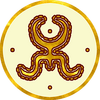
The Hephthalites, also called the White Huns, were a nomadic Eastern Iranian and Bactrian people who formed an empire in Asia from the 440s to 710. Led by Aksunvar at the start of the 5th century, the White Huns controlled territory from Kazakhstan in the north to Pakistan in the south, and from China in the east to Afghanistan in the west. Although of Iranian stock, they deliberately identified themselves as Huns to scare their enemies. By 479, the Huns had conquered Sogdia and drove the Kidarites westwards, conquering the Tarim Basin in 493. The White Huns invaded the Indian Gupta Empire in the 6th century, causing more troubles for the Guptas, and eventually their collapse. However, they were driven out of India in 577 by Yasodharman and Narasimhagupta, and their remnants were assimilated into Indian society as the "Rajputs". In 609, the White Huns were reduced to tributaries of the Sassanid Persians and the Turkic tribes. Small Hepthalite principalities existed in Afghanistan into the 8th century, with Badghis and Chaghaniyan submitting to Qutaiba ibn Muslim's Arab army in 705. Some remnants of the Hephthalite confederation joined the Gokturks, who took over much of their former Central Asian empire. The Hephthalites are also theorized to have been the ancestors of the Pashtuns (especially Durrani Pashtuns, with their pre-1747 name Abdali possibly deriving from Hephthalite, and the Ghilji tribe, assimilated descendants of the Turkic Khalaj people), the Karluks, and the Rajputs.
Rulers[]
- Aksunvar (390-420)
- Toraman Akhsunvar (420-470)
- Toraman (496-502)
- Mihirakula (502-530)
- Unknown from 530 to 567

